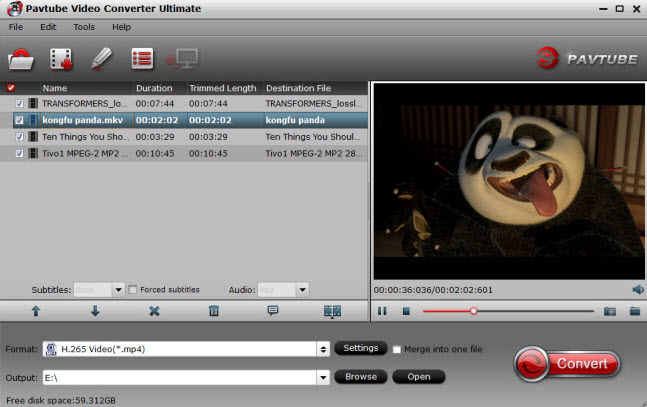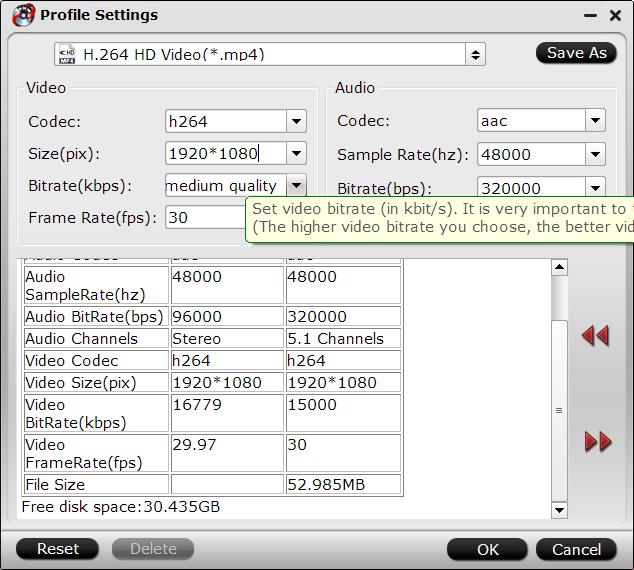When you go on a trip with your family or friends, you can take the camera and record the unforgettable moments, at this condition, one 4K camera is the best option which can capture the perfect 4K video. No doubt, with the advanced 4K technology, there are many different 4K camera brands on the market, like the Panasonic, Sony, Canon, etc. Which one 4K camera brand do you want to buy? Do you care the price? Size? Resolution? or other factors? We have chosen out the best 4K camera for you, we collect the detailed information about them, you can refer to these information and make the final decision.
Welcome to the 4K Camera World: Select Your Best 4K Camera
No 1. Panasonic Lumix GH5
| Type | Sensor size | Resolution | Lens |
| Mirrorless | Micro Four Thirds | 20.3MP | Micro Four Thirds |
| Viewfinder | Monitor | Maximum continuous shooting speed | User level |
| EVF | 3.2-inch vari-angle display, 1,620,000 dots | 1,620,000 dots | Expert |
| Pros | Cons | ||
|
|
||
Review: The GH5 uses the entire width of the chip and then downsamples the footage in-camera, you’ll be able to use your lenses as if you’re shooting stills. Currently the Lumix GH5 allows users to shoot Cinema 4K (4096 x 2160) at 60p with a bit rate of 150Mbps, while Full HD video is obviously also possible, up to a very impressive 180p. In addition, as the GH5 offers color subsampling at 4:2:2 and a color depth of 10-bit, delivering greater color information and richer graduations. The GH5 also offers live output to external recorders such as Apple ProRes via HDMI, as well as simultaneous internal recording.
No 2. Sony Alpha A7S II
| Type | Sensor size | Resolution | Lens |
| Mirrorless | Full-frame CMOS | 12.2MP | Sony E mount |
| Viewfinder | Monitor | Maximum continuous shooting speed | User level |
| EVF | 3.0-inch tilting display, 1,228,800 dots | 5fps | Expert |
| Pros | Cons | ||
|
|
||
Review: One of this 4K camera's major selling points at launch – internal recording of 4K footage – has since been matched by many others, but it’s the modest pixel count of its sensor that splits it from its rivals Also its dynamic range to be very high, and consistently better than rivals at higher sensitivities, while noise was also shown to be lower than cameras with more populated chips. It also has the advantage of using the whole sensor width for recording video, and of being able to record to the memory card while outputting 4:2:2 footage to a HDMI recorder, but proves itself to be capable for stills shooting too.
No 3. Sony Alpha A6500
| Type | Sensor size | Resolution | Lens |
| Mirrorless | APS-C | 24.2MP | Sony E mount |
| Viewfinder | Monitor | Maximum continuous shooting speed | User level |
| EVF | 3-inch tilting touchscreen, 921k dots | 11fps | Intermediate |
| Pros | Cons | ||
|
|
||
Review: The camera records 6K footage that’s downsampled to 4K for the benefit of quality, and uses the efficient XAVC S codec that has a rate of 100Mbps. This is joined by Log gamma modes, 120fps HD recording (also at 100Mbps) and enhanced zebra patterning to keep an eye on exposure. Users also benefit from a 425-phase-detect-point focusing system for rapid focus and a 2.36-million-dot OLED viewfinder, together with 11fps burst shooting at full resolution, all inside a dust- and moisture-resistant body. That's not to mention the welcome addition of Sony's 5-axis in-body image stabilization system.
No 4. Canon XC10
| Type | Sensor size | Resolution | Lens |
| Hybrid | 1-inch CMOS | 12MP | 24.1-241mm |
| Viewfinder | Monitor | Maximum continuous shooting speed | User level |
| None (loupe provided) | 3-inch touchscreen, 1.03million dots | 3.8fps | Expert |
| Pros | Cons | ||
|
|
||
Review: The XC10 is perhaps the least-conventional model amog these 4K cameras. The model blends a 12MP 1-inch CMOS sensor with a 24.1-241mm image-stabilised lens, and packages it in a relatively compact body whose adjustable grip provides excellent flexibility. It records 4K UHD footage at 8-bit 4:2:2 footage internally, and users can call upon the Canon Log option to capture up to 12EV stops of dynamic range. You also get a built-in ND filter, clean HDMI output and focus peaking, and Canon even throws in a loupe so that you can use the rear LCD touchscreen much like an electronic viewfinder.
No 5. Olympus OM-D E-M1 Mark II
| Type | Sensor size | Resolution | Lens |
| Mirrorless | Micro Four Thirds | 20.4MP | Micro Four Thirds |
| Viewfinder | Monitor | Maximum continuous shooting speed | User level |
| EVF | 3.0-inch free-angle display, 1,037,000 dots | 60fps | Expert |
| Pros | Cons | ||
|
|
||
Review: Buying this 4K camera, not only do you get 4K capture in both DCI and UHD flavours, you also get clean output over HDMI at 4:2:2, a headphone port for audio monitoring and the benefits of Olympus’s fast Hybrid AF system, which works in conjunction with the touchscreen for even easier subject selection. while Panasonic may have had a head start with video, the OM-D E-M1 Mark II certainly sets the bar high for a flagship Micro Four Thirds camera.
No 6. Nikon D500
| Type | Sensor size | Resolution | Lens |
| DSLR | APS-C-format CMOS | 20.9MP | Nikon F |
| Viewfinder | Monitor | Maximum continuous shooting speed | User level |
| Optical | 3.2-inch tilt-angle touchscreen, 2,359,000 dots | 10fps | Expert |
| Pros | Cons | ||
|
|
||
Review: Nikon certainly didn't hold back with the specs. With a fresh 20.7MP sensor, a highly advanced 153-point AF system and 10fps shooting for up to 200 frames supported by features such as a tilting touchscreen and whole suite of connectivity options. The camera is capable of 4K UHD capture at 30p/25p/24p, and while the 1.5x crop factor applied to this (on top of the existing APS-C crop factor) may be seen as a drawback, you could also argue that it’s an advantage on a camera designed with sports and action in mind.
No 7. Fuji X-T2
| Type | Sensor size | Resolution | Lens |
| Mirrorless | APS-C | 24.3MP | Fuji X |
| Viewfinder | Monitor | Maximum continuous shooting speed | User level |
| EVF | 3.0-inch tilt-angle display, 1,040,000 dots | 8fps | Intermediate/Expert |
| Pros | Cons | ||
|
|
||
Review: The X-T2 was undoubtedly one of the highlights of the past 12 months, and showed just how much more seriously Fujifilm was taking video recording with its X series. Its 4K UHD footage is created by oversampling – i.e. capturing more detail than required – so the output footage ends up with better clarity and less risk of artefacts. You can also output 4:2:2 footage through the camera’s HDMI port (albeit in 8-bit) and access a Log gamma profile while doing so. Users who enjoy using Fujifilm’s Film Simulations modes for stills will no doubt be pleased to know that you can also use these for video.
No 8. Panasonic Lumix G80 / G85
| Type | Sensor size | Resolution | Lens |
| Mirrorless | Micro Four Thirds | 16MP | Micro Four Thirds |
| Viewfinder | Monitor | Maximum continuous shooting speed | User level |
| EVF | 3.0-inch display, 1,040,000 dots | 9fps | Beginner/intermediate |
| Pros | Cons | ||
|
|
||
Review: The Lumix G80 (known as the G85 in the US) has the advantage of being relatively new, and thus kitted out with the latest technology. The Dual IS Mark II system means you benefit from both body and lens image stabilisation, and the former also works to steady unstabilised optics. Footage itself can be recorded at up to 30p, at a bit rate of up to 100Mbps, and you can also call upon zebra patterning and focus peaking to help when recording. Panasonic’s clever Live Cropping feature is also on board, and this allows for professional-looking panning and zooming all in-camera, although this is output at HD quality.
Take Full Use of the 4K Camera Recordings: Best 4K Video Converter
Even though you can take the best 4K videos form the camera, when you watching the 4K videos on TV, you may meet some troubles, for example: The TV screen is black or you get the error message shows that your TV can't recognize your 4K videos. In addition, for some people who want to upload the wonderful 4K videos to Youtube. Facebook or Vimeo, you may meet some troubles due to the video codec, video frame, video bitarte, video size, video length, etc. All these troubles can be solved by one 4K video converter.
From the market, we find the 4K hero: Pavtube Video Converter Ultimate which is eay to use, install and upgrade, professional 4K video converer. You can import any 4K video recordings you like, at the same time, you can choose any video format you want to convert, like the MP4, AVI, H.264, H.265, MOV, etc. Best of all, this software allows you to adjust the 4K video related parameter for better compatibility. Big surprise: You also can edit hte videos in this software, like the video cutting, trimming, adding subtitles, watermark, text, etc.
Quick Guide: Getting The Desired Video Format
Step 1. First, you need to transfer the 4K video to your PC. Then launch the video converter on your PC, then click the "Folder" or "Video" icon to load source video files from your local computer to the program.
Step 2. Click the "Format" bar and open the drop-down list, select one video format you want. You can choose one video from the "HD Video" main category. You also can choose video format from the Common Video, TVs, Apple TV, NLE software, Android devices, etc.

Optional Step: Click “Settings” to open “Profile Settings” window, here you can choose or specify the video parameters such as video/audio codecs, file size, bit rates, frame rates, etc as you like. You also can compress the 4K video to HD video by adjusting the 4K video resolution, gframe, etc without much quaity loss.

Step 3. Press the Convert button to begin the video conversion, Just wait for a while, this software will finish the complicated video conversion.
Conclusion: You can choose one 4K camera you like, when you play, edit the 4K video and meet some troubles, you can use this best 4K video converter. Best 4K Camera and Best 4K video converter, I believe you can get the best 4K experience.



